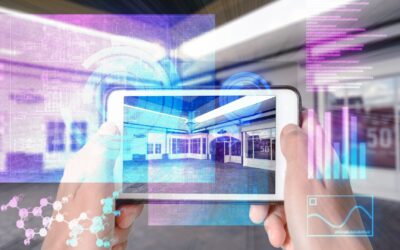Machine Learning Taking Personalization to a New Level
01
Mar 2024
-
CAtegories
-
discover more
Modern retailing means collecting enough data on customers so you can offer her a truly personalized buying experience. Both research and real-world experience have made it clear that cookie-cutter customer experiences will not lead to strong enough sales growth no matter how great the product is.
The new Golden Rule of marketing is: “Use personalization to create an ideal customer experience, because customers are much more likely to buy when shopping is enjoyable.”
A Gartner report highlights that more than nine out of 10 marketers say customers today expect individualized experiences. Moreover, Gartner projects businesses that have fully invested in personalization will sell an average of 30% more products/eservices than businesses that have not. The reasons for this change is consumer frustration with “unfriendly” and cookie-cutter marketing models from the last century.
Given the generally high quality of most products today, and all the retail and shopping options, consumers have learned to shop (and buy) where they feel appreciated and valued as an individual.
Tech giants Google, Amazon and Netflix Lead the Pack with Online Personalization
Over the last decade or so, tech giants like Google, Amazon and Netflix have developed machine learning (ML) algorithms that learn similar to how humans do. Like a human being meeting a new colleague or a distant cousin for the first time, and needing to spend an hour or two chatting to get to know this new person, an ML algorithm requires a good bit of interaction with a consumer to “get to know” her well.
In the past, marketers delivered a limited “personalized experience” to customers using rules and segmentation of customers, site visitors or app users based on a variety of criteria. The marketer would use a “rule” to display a varying experience to each of those different segments. For example, each segment (group of customers) would receive different content such as a whitepaper or a case study depending on their gender, income or industry where they work.
This kind of manual personalization works, but it can only go so far. The issue with this method is that rules written by humans are based on their subjective beliefs, and are often not based on hard data. Moreover, every person comes with complex interactions of their specific needs and desires, and dividing a large group of people into a few segments based on a handful of rules cannot adequately model this complexity.
That’s where ML comes in. All of the data collected on consumers is far too much for humans to properly analyze without machine learning. Machine learning doesn’t rely on giving a computer a huge set of rules to follow. ML systems learn the rules by iteration and experience, in other words, seeing what works and what doesn’t work. A few examples of how AI is used in business today are discussed below.
Machine Learning Emulates Human Decision-Making Process
Machine learning is designed to emulate the complex, layered human decision-making process. For example, when you’re involved in a conversation, you decide what to say and recognize when to stop talking based on social contest and your accumulated knowledge about your interlocutors. If this conversation is the first time you’ve spoken to this individual, you have internalized behavior guidelines from similar social circumstances in memory to help you make decisions.
ML operates on the same principle. With ML, decision making is also based on recognizing and remembering situations, and the ML decision-making engine develops an adaptable “pattern map” based on all its data to date to govern its behavior.
Today, ML is used by retailers of all sizes to determine optimum marketing messaging, the best offers to showcase to specific individuals (for example, Amazon, eBay, Google. Caesar’s Total Rewards, Best Buy, etc.), navigation options (Google), the search results you are shown (Google), when to send an email and what to say (Salesforce), or the most relevant products or content for you to view (articles, blogs videos, etc.), all based on real data about past behaviors.
Moreover, machine learning uses real data to make ongoing decisions, just like we all use the data we have in our brains to make ongoing decisions in a conversation or a poker game. While the idea of personalization of the customer experience has been around for many years, ML with human-like decision making has recently made it possible to take customer personalization to an entirely new level.







